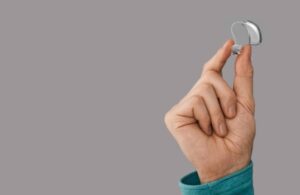Types of Hearing Aids
May 11, 2023
When experiencing hearing loss, a high-quality hearing aids Adelaide can significantly improve your hearing ability, increasing social engagement and reducing feelings of isolation and depression.
There are many different types of hearing aids available, so it’s important to talk to a hearing care professional about which device would best suit you. Here’s a look at some of the most common styles and what to expect during your consultation.
ITE
ITE (in-the-ear) hearing aids are custom-made for your ear. They may be a half-shell or full-shell and feature many of the same technologies as their behind-the-ear counterparts.
They also pack some serious sound quality and amplification power. They can even be equipped with telecoils, which let you hear phone conversations and sounds in public buildings like schools and airports. For professional hearing aids Adelaide services, check out hcaudiology.net.au now.
ITE-style hearing aids are usually bigger than their BTE and ITC cousins to accommodate more significant hearing losses. They also feature more advanced technology than their predecessors, including directional microphones and tinnitus management features.
RIC
RIC hearing aids Adelaide are one of the most popular devices available today. They are smaller than BTE devices and have a slim case that blends seamlessly behind your ear.
They are also discreet because they fit further inside your ear canal than many other models. They’re also available in various colours to match your skin and hair.
RICs are an excellent choice for people with mild to moderate hearing loss who want to have their devices as discreetly as possible. They can also be more affordable than their BTE counterparts because they don’t require custom moulds for each user.
BTE
 BTE (Behind the Ear) hearing aids Adelaide is a versatile option that helps almost all types of hearing loss. These devices are available with either a thin tube in the ear canal or a dome covering your ear. For professional hearing aids Adelaide services, check out hcaudiology.net.au now.
BTE (Behind the Ear) hearing aids Adelaide is a versatile option that helps almost all types of hearing loss. These devices are available with either a thin tube in the ear canal or a dome covering your ear. For professional hearing aids Adelaide services, check out hcaudiology.net.au now.
They are also available in various colours for those who want less noticeable, such as a shade that matches your hair. They are the most recommended device by audiologists and can be used for those with mild or severe hearing loss. If you are considering a hearing aid, it is best to consult an experienced audiologist who can determine the cause of your hearing loss and recommend the correct type. They can also explain the differences between hearing aids, show you how to use them and provide aftercare.
CIC
A completely-in-the-canal hearing aid is positioned inside your ear canal and is virtually invisible. It is lightweight, custom-fit and comfortable to wear.
This design allows your ear to continue performing its natural function, collecting sound naturally and funnelling it towards your microphone in the ear canal. This allows improved localization detection – knowing where sounds are coming from and a more natural hearing experience.
CIC hearing aids are also easy to handle, and their fixed position within your ear prevents unwanted movement. They are also fitted with a trim removal tab in the outer ear, so you can remove them quickly and comfortably when required.
CCIR
Commander’s critical information requirements (CCIR) are the bits of data a commander must have to lead a unit successfully. The commander must develop the CCIR and be tailored to the mission and situation. It should be designed with a definition that is clear and concrete so it can be understood and adhered to by all. It should also be free from constraints caused by stress or information overload.
Hearing Aids Adelaide
Many hearing aids Adelaide styles are available, and a trained hearing care professional is the best person to advise you about which ones suit your needs. They have extensive training and real-world experience and can fit you with the proper hearing devices for your hearing loss, lifestyle, and budget.
The type of hearing aid Adelaide you get depends on your level of hearing loss, the size and shape of your ear and how well you can use your fingers and hands (manual dexterity). For example, a behind-the-ear (BTE) device or an in-the-ear (ITE) hearing aid may suit people with severe or profound hearing loss.
A hearing aid should have advanced features that help filter noise from speech, adapt to different environments, suppress feedback, and wirelessly connect mobile phones or other assistive listening devices. They can also be fitted with a directional microphone that helps you speak in noisy environments and noise reduction technology that reduces background noise. For professional hearing aids Adelaide services, check out hcaudiology.net.au now.